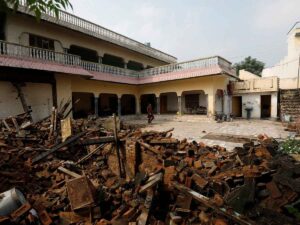4.3 magnitude earthquake jolts Afghanistan
Kabul [Afghanistan], February 4 (ANI): An earthquake of magnitude 4.3 occurred in Afghanistan at around 09:07 am on Saturday.
The depth of the quake was 186 km below the ground according to the National Center for Seismology (NCS). “Earthquake of Magnitude:4.3, Occurred on 04-02-2023, 09:07:23 IST, Lat: 36.64 & Long: 71.46, Depth: 186 Km, Location: Afghanistan,” tweeted NCS. No casualties have been reported yet.
People in Afghanistan’s Paktika province who were hit by earthquakes have already been living a life of misery, and continue to face problems amid the cold spell in Afghanistan as they are forced to live in caves, Tolo News reported.
Previously, earthquakes in the Paktia province killed many of these families who were enduring the cold; however, the cold is now affecting them. The cold is causing problems for many families right now.
According to official statistics, the earthquake that struck Paktika and Khost provinces this summer completely destroyed over 7,800 homes, 6,000 of which are in the Gayan district. Notably, an earthquake of magnitude 4.0 struck Manipur’s Ukhrul today morning. The earthquake occurred at 6.14 am on Saturday, the NCS said.
Meanwhile, an earthquake of magnitude 3.2 on the Richter scale hit Shamli in Uttar Pradesh on Friday. The Earth’s crust is especially lively in Afghanistan because it is where the Arabian, Indian and Eurasian tectonic plates meet. The boundary between the Indian and Eurasian plates exists near Afghanistan’s border with Pakistan.
Recent earthquakes formed when the Indian plate crashed violently with the Eurasian plate. Collisions like this shake and squeeze the ground upwards.
Along with causing earthquakes, this movement creates mountains like the Himalayas or the Hindu Kush and Pamir mountain ranges in northeast Afghanistan.
Afghanistan is earthquake-prone because it’s located in the mountainous Hindu Kush region, part of the Alpide belt.
This belt is the world’s second most seismically active region after the Pacific Ring of Fire. The Alpide belt runs about 15,000 kilometres, from the southern part of Eurasia through the Himalayas and into the Atlantic. Along with the Hindu Kush, it includes a number of mountain ranges, such as the Alps, Atlas Mountains and the Caucasus Mountains.






